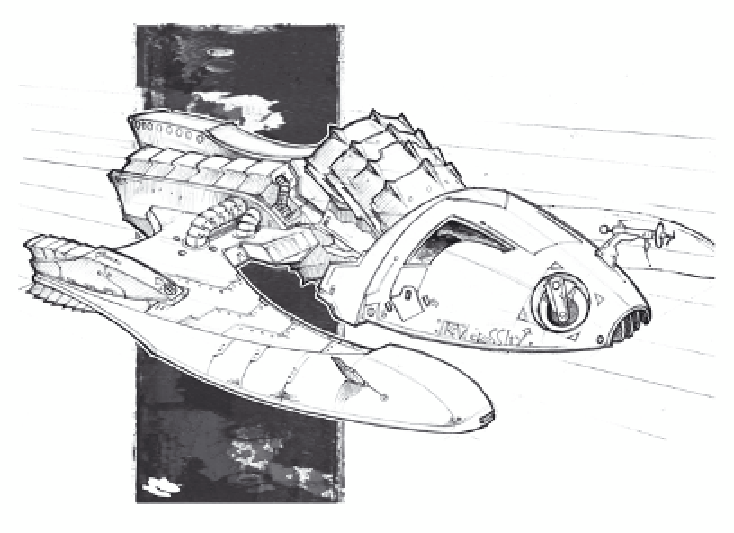Game Development Reference
In-Depth Information
•
Are there weapons? Where are they situated?
•
What is the configuration of the ship?
How large is it?
I begin this exploration process by filling a page with drawings of ships, simple sketches from
a
top-down perspective, experimenting with different outlines and silhouettes, moving engines
around, and positioning weaponry in different places (see Figure 10-2). I then choose the best
examples from this page, and set about producing another page of ideas with these as a starting
point. While it might seem excessive to produce so much artwork when so few will ever be used,
the sheer number of variations means there is a greater chance of finding that killer design, and
some of the other designs can of course be used elsewhere in the game, or used in a future
project! Finally, I chose an image from the last page of variations and rendered this up as a
finished design (see Figure 10-3). The player won't know how many different designs were
explored in order to reach this point, but the result benefits from all that hard work.
•
Figure 10-3.
The final spaceship
Silhouetiquette
It was during this phase that the issue of silhouette legibility came to the fore. The initial sketches
for the levels made it clear that some objects were either a little obscure, such as the featureless
squares of boxes and crates, or just messy in the case of bushes and trees. The solution to these
problems also answered another issue, that being whether or not to include certain amounts of
detail in the artwork. So, a featureless box becomes a crate by the use of erased lines to define the
planks of wood that make it. A messy bush gains some definition via a little trimming and erasing
leafy shapes into the silhouetted mass (see Figure 10-4). Once the decision is made to add this
sort of detailing, then the flat-colored shapes that will define the game environment become a
little less intimidating to tackle, and a lot easier to visually read.

Search WWH ::

Custom Search